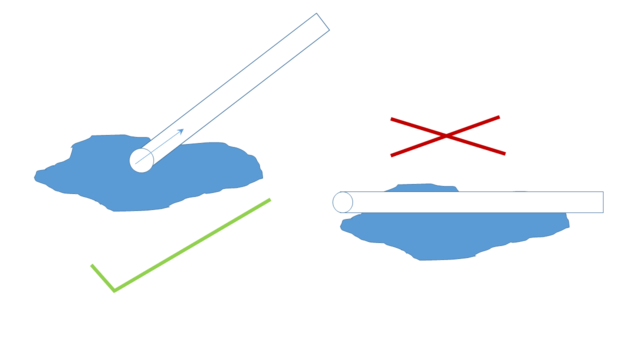Infant Saliva Collection tips
Their group collects saliva samples with the Infant Swab from premature babies from 2 lb. Sometimes they do get only 150-200 uL volume, and you could test in singlet when volume is low. Position the end of the swab between the cheek and bottom gum on the resting side of the infant’s head to collect pooled saliva.
You may think of those who are able to hold their head up, thrusting their tongue and showing signs of ready to eat baby food as the infants who will have saliva under the tongue.You can also see a collection video on our YouTube Channel , but this is for infants who are able to hold their head up. https://www.youtube.com/watch?v=zkPQtNrnt8Q
Remember, it’s the end of the swab that is most absorbent, by a long way – the side of the swab is much less absorbent, so you need to place the end in the saliva as shown:

It might take a little longer if your newborn has a dry mouth or is on caffeine or other medications. For cortisol testing, we say to keep the collection time within 2-5 minutes for this population.With some patience and connecting with the baby, you can do it!
Here are Annie’s tips:
1. We would always try to collect right before the babies were supposed to be fed. If the babies are hungry they will start to salivate more on their own. This might be tricky for the 48 hour time window because they won’t be on much of a feeding schedule yet but always worth a try anyway.
2. Because we were collecting in preterm infants who were usually in cribs or incubators we would always turn the babies so their heads were on their sides so as to allow any saliva in the mouth to pool in the back of their cheek.
3. It is the core of the swab that is the absorbent part and not the outside so if the babies are chewing on the outside of the swab that is good because it means they will salivate but then you will need to control the swab and dab at the cheeks and under the tongue to soak up the saliva through the center of the end of the swab.
4. Sometimes we would put a pacifier in the baby’s mouth with the swab in there right next to it to promote sucking and thus salivation. We would also hold the swab in the baby’s mouth for up to two minutes and sometimes if we visually saw that the baby’s mouth seemed a bit dry we would leave it in 3 minutes or more.
5. We also used the same two people to collect samples for our study so she and I became familiar with the collection procedure and throughout our longitudinal study we became familiar with which babies were naturally producing more or less saliva and some of the signs to look for when determining if the swab was collecting or not.
6. Another tip is that I made sure to collect all the samples and then centrifuge them immediately after collection while they were still at room temperature and this seemed to give us the greatest volumes of saliva collected rather than refrigerating them until you get to centrifuge them later.
Some other answers to questions –
1. The core of the swab is referring to the part you see when you look at the circular shape of the swab. The outer circle of the swab from that end is not absorbent, just the middle filling.
2. I have not tried to syringe the swabs although I have read in other manuscripts that it is a good method. When we centrifuged the swabs we were getting enough saliva so we didn’t necessarily need to syringe but maybe you could try to centrifuge and then squeeze and syringe anything left over or the other way around, syringe and then centrifuge. I know that would be an extra step for you but it took us a while to perfect the protocol that worked best for us so take your time and get it right and it will really help your project in the end.
3. All of the babies we swabbed were awake. I would highly recommend waking up a baby that you are about to swab if that is alright with the family as this will stimulate the baby to start to produce saliva.